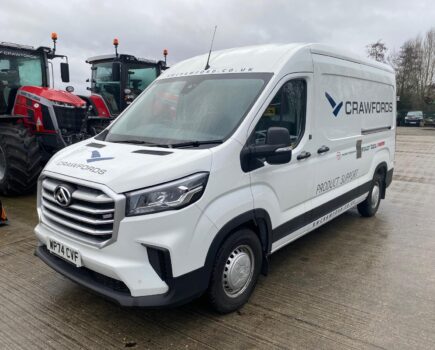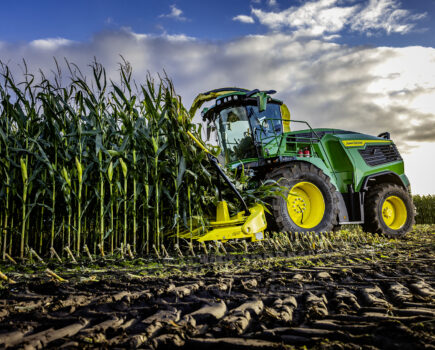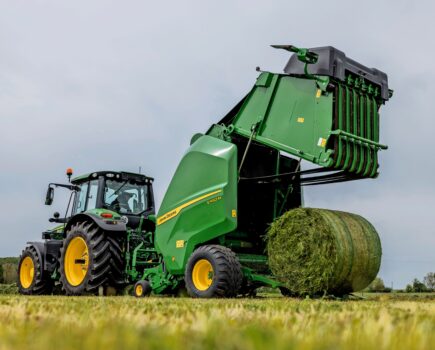If there is one topic that farm contractors talk about more than any other, then it’s the life of a typical agricultural tyre and how many hours they will get out of it.
The honest answer is that it’s very difficult to say, with several factors combining to affect the performance and outputs of each product. But Bridgestone’s VT Sales Manager for North Europe Stephen Lamb is on hand to shed some light on the question and provide some valuable insight for customers.
Stephen said: “It’s an often-asked question: ‘How many hours will I get out of a set of tractor tyres?
“It is both a logical and a business-focused poser, but to give a defined answer or even an estimated one is difficult, as many elements come into play.
“The nature of the application, soil type, tyre selection, having a balanced tractor, percentage of road-use and even driver behaviour, all play an important part in gaining the maximum return from your investment.
“You would like to see a rear tyre under average/normal farming conditions achieving a serviceable work life in the region of 4,000 – 5,000hrs in typical working conditions.
“My worst rapid wear case was 52hrs/mm up on the heavy flint-land of the Yorkshire Wolds with heavy draft-work. Yet I have also seen wear-rates of 10,000 + hours with older third-line tractors, say now doing only 200-300 hrs a year (thus having very little impact on the aging/harder outer rubber surface of the tread to generate any real degree of wear).
“As a rough guide I will offer the following estimated breakdown:
| HOURS WORKED PER MM OF TREAD. | |
| 0 – 50 | Mechanical and/or Operational Set-up Concerns. |
| 50 – 75 | As above, and/or Abrasive Contact Surface. |
| 75 – 100 | As above, but at a Reduced Level. |
| 100 | Average – The Norm. |
| 120 | Good Operational & Maintenance Practices. |
| 150 | A Well-Balanced Tractor been achieved, with strong Operator engagement. |
| 200 | Operationally Balanced and All Elements Working in Harmony |
| 200+ | Utopia… |
“One area to look at is tread profile/volume and how much usable tread rubber is on the tyre and not just tread height, which is just one dimension. Also take into account tread width, tread length and number of treads (I.E., the total volume of usable tread rubber available to you).
“Much of the total life expectancy of a tyre will also be governed by at what point the tyre becomes unserviceable from an operational point of view. In some cases, 10mm of remaining tread could still be fine for a roadwork application, yet with heavy cultivation in wetter conditions, would be deemed totally in affective/worn-out.
“With most manufacturers having some 50 – 60mm of tread depth on a rear tyre, you would expect a life expectancy of some 4,000 – 5,000hrs on average, with a wear-rate of 100hrs/mm.
“However, most farmers would have a good understanding of what they would hope to achieve from their tyre investment, based on their own local and historical – personal experiences.





